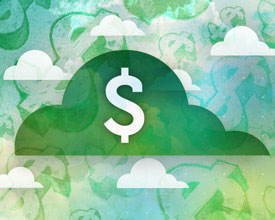Craig Vodnik| Microscope
The cloud fundamentally changed the way that independent software vendors (ISVs) market and sell their products by emphasising cost-effectiveness and ease of scalability. It also changed the way IT departments buy and use software.
However, we often overlook how the cloud revolution affected channel partnerships. In the era of cloud computing, if vendors and their partners don’t update their channel strategy, they risk being marginalised.
What is the current situation?
There are a variety of channel partners in the software industry, and some common types include:
- Referral partner – A referral partner is like an affiliate program, in that the partner referrers its audience to buy the vendor’s product. Referring partners generally earn commissions upon reaching a certain number or conversions (CPA) or impressions (CPM).
- Authorised or value-added reseller (VAR) – In the software industry, a VAR acquires the vendor’s solution at a discount and resells the product to their customers for a profit. The VAR will often include the program on a piece of hardware that they also sell to the consumer.
- Managed service provider (MSP) – An MSP typically has a more advanced understanding of the vendor’s product than a referral partner or a VAR. Instead of building a special department in-house, many corporations rely on MSPs to figure out the company’s IT needs. This puts MSPs in a very special position vis-à-vis the vendor and buyer: They represent the vendor’s product and act as a dedicated consultant/maintenance team to the buyer.
In its most basic sense, channel partners function as an auxiliary marketing and sales team for ISVs by connecting customers to a vendor’s products. They typically have access to a target customer base the vendor cannot reach on its own. This situation provides the vendor a broader customer reach and earns the partner some sort of revenue for opening up new channels.
Corporate IT departments look to channel partners to help them not only decide how much to spend on a desired solution, but also help with implementation and customization.
Additionally, channel partners offer other benefits such as:
- Offering a local support option
- Building awareness for your product
- Providing market feedback
Compensating channel partners
“In North America, there are approximately 100,000 providers that provide IT services. Of this number, most are hardware VAR/resellers, and 15,000 to 20,000 would be considered managed service providers.” – via “The Massive SaaS Opportunities for VARs.”
Excluding VARs, channel partners are compensated by the ISV based on a percentage of how many products they sold. ISVs like this approach because they were essentially paying for an outside sales team (channel partners) to find leads, convert them, support them and only paid out if the channel partner was successful.
But what happens in the era of cloud computing where subscriptions are the dominant payment method? What compensation models should ISVs use for their channel partners?
Compensating channel partners in the cloud era
Channel partners are seeing their businesses disrupted as cloud computing takes much of the installation expertise required out of setting up the solution. Cloud computing also simplifies customisation and spreads costs out over many billing periods. In the same way that newspaper companies used to make money with their classifieds sections, channel partners need to reinvent themselves to meet their markets’ needs.
“…solution providers in the age of the cloud will…need to address compensation models that are quickly becoming obsolete in a cloud age where the life of any given contract is likely to span multiple years of revenue recognition.” – via “Citrix Sees Crucial Cloud Broker Role Emerging for the Channel,” Bridge Metrics.
This quote is from a blog post that discusses the implementation and billing challenges that software vendors and their channel partners face from the XaaS revolution. Now, a partner’s conversation with their customer needs to first start with what the corporate IT department is trying to achieve versus what they might ultimately buy. That changes the partner’s role from “representing” a few product lines to being a true service provider skilled in collaborating on many solutions.
Stefan Utzinger, the author of Channel Revolution, made us aware of this idea several years ago when we he said that in the era of cloud computing, channel partners will transform from VARs who sell, install and maintain a piece of software to MSPs who offer consultation and provide advice on how to use the software.
In that sense, the future of the channel partner is someone who builds a relationship with a client, is capable of quickly understanding new products the client is interested in, serves as a recurring expert for support and best practices, and gets paid a monthly fee that in total will be more than the one-time fee they previously got paid up front.
Since the channel partner is actually doing more in this scenario, they will earn more revenue. Just keep in mind that they may make the initial sale, for which they previously earned all their commission up front. As the chart below shows, that model is unlikely to persist because in a SaaS/subscription the ISV is only making a fraction of the revenue each month. They cannot afford to pay commissions for life-time values when the revenue is only generated incrementally.
Revenue Paid for ISV Product by Year (US $)
| Year 1 | Year 2 | Year 3 | Year 4 | |
| On-premise software | $1,000 | $200 | $200 | $200 |
| Cloud software | $800 | $800 | $800 | $800 |
Partner Commission Model (US $)
| Year 1 | Year 2 | Year 3 | Year 4 | |
| On-premise software | $800 | $50 | $50 | $50 |
| Cloud software | $600 | $500 | $400 | $300 |
The Developer Channel
Another interesting channel to emerge due to the advent of cloud computing is the developer channel. SaaS companies like Box and Hightail (formerly YouSendIt) offer typical partnerships such as resellers, referrals and MSPs, but also offer developers the opportunity to become partners of their solution by building out new apps through a distributed API.
Box Channel Partners
Box offers three types of partnerships on its “Become a Partner” page:
- Alliance – An MSP-like situation where the partner earns incremental revenue from providing support and service to Box users.
- Reseller – A referral-like partnership where recurring commission is earned by hitting sales targets.
- Developer – The partner earns revenue by building innovative apps through the Box API.
In the end, this isn’t just an issue for channel partners, but also the ISVs that must provide resources and compensation models that help their partners succeed. Because corporate IT organisations are procuring more and more cloud products, channel partners need to evolve their business to meet both the corporate IT department needs as well as the ISV’s product distribution model.













